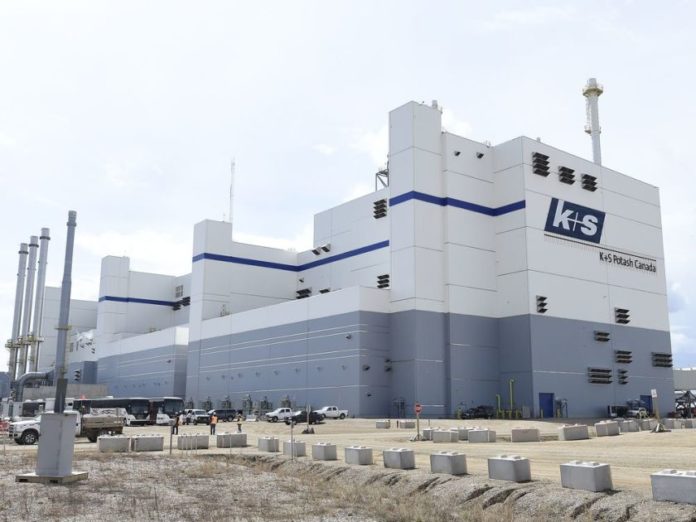
The province’s industrial sector has a better idea of what Saskatchewan’s climate change plan will look like, how much emissions they can have and what the penalties might look like.
Minister of Environment Dustin Duncan unveiled the emissions regulation regime for Saskatchewan’s 40 largest industrial emitters during a press conference in Moose Jaw Wednesday. The targets are the latest part of the province’s Prairie Resilience plan to combat climate change, a plan it says is better for the environment and economy than the federal carbon tax.
The targets for industrial emitters, along with previously-announced 40 per cent reduction targets for electricity generation and upstream oil and gas methane production, brings 58 per cent of the province’s emissions under the new regulations.
The emissions reductions will be phased in, eventually reducing an estimated 10 per cent, or 5.3 million tonnes, of emissions by 2030. They apply to facilities that emit more than 25,000 tonnes of carbon dioxide equivalents each year, a total of more than 40 facilities, including pulp mills, iron and steel mills, mining, manufacturing and refining.
The performance standards are expected to achieve emissions intensity reductions of five per cent in potash, coal and uranium mining, iron and steel mills, fertilizer manufacturing, pulp mills and ethanol production; 10 per cent in refining and upgrading; and 15 per cent in upstream oil an gas combustion. Facilities will be able to choose from a variety of compliance options including offset credits, best performance credits and paying into a technology fund.
“The standards for these sectors were developed in consultation with industry, and account for overall economic growth competitiveness and trade exposure, minimal regulatory burden and sector-specific achievability,” Duncan told reporters.
“This approach responsibly and tangibly reduces emissions and protects our trade-exposed economy – the goal of our strategy and main concern with the federal carbon tax.”
In a follow-up interview, David Brock, assistant deputy minister for climate change and adaptation within the Ministry of Environment, elaborated on the performance standards and compliance options presented Wednesday.
“There is no cap on absolute tonnage,” he said.
“What there is is a tightening stringency on how efficient the firm is.”
He used the hypothetical example of a potash company. If it takes the company 100 units of emissions to create one unit of potash, in year one they would have to reduce their emissions intensity to 99 units of emissions to produce that one unit of potash, and to 98 the next year.
“It ratchets up between 2019 and 2030,” he said.
The primary way a business could become compliant is just by reducing their emissions to meet the yearly targets. But if they should go over the target, they can choose from a few options to become compliant.
The technology fund would collect money from businesses and be invested in industry innovations that would reduce emissions.
“From government’s perspective, it’s not money that is paid into a general revenue fund. It’s money that would be specifically dedicated to go back into the sector,” Brock said.
Firms would be able to apply for the funds to create or implement technology within their facility to reduce emissions.
Best performance credits will be available to firms that are leaders in their sector. Businesses would be able to earn credits and then use it at another facility owned by the same firm, or sell the credit to another firm that operates a regulated facility.
The market offsets are credits that can be purchased form non-regulated businesses, such as farmers or forestry businesses who have done something to reduce or sequester emissions.
“There are two important aspects of this,” Brock said. “One is whatever action is taken by the non-regulated entity would have to be approved and sanctioned by the government. A second important aspect is the emissions reduction or carbon sequestered has to be additional to business as usual.”
That means businesses that are already planting 100 trees every year can’t get the offset credit. They have to do more than what is business as usual.
The final compliance option is what is known as Internationally Transferred Mitigation Outcomes (ITMO), set up in the Paris Agreement, but not yet functioning internationally.
“A facility in Canada would seek to reduce emissions in another country and take credit for those reductions back to their home jurisdiction,” Brock explained.
‘They would have that credit recognized by their provincial government and most likely the federal government as well.”
Brock said Saskatchewan’s proposed regulations differ from what other provinces have done, such as cap and trade and carbon taxes for a few key reasons.
In terms of cap and trade, there are no hard caps, instead, there is a standard for emissions reduction related to the unity of production by the facility, a different mathematic relationship. The allowances, the trade part of cap and trade, are also not a part of this plan.
“One of the fundamental differences is that a performance standard still allows for economic growth, whereas a cap that caps total emissions can be seen as an inhibitor to economic growth,” Brock said.
He also rejected the argument that the Saskatchewan plan is like a targeted carbon tax.
“What we announced yesterday is clearly focused on emissions reductions, whereas taxes focus on behavioural change. The other primary difference is a carbon tax is applied to people, whereas a performance standard is applied on facilities, in this case, within certain sectors, and those facilities are expected to reduce their emissions intensity.”

